Language
You can read the magazine in one of the following languages
Geolocation
You can read the global content or the content from your region
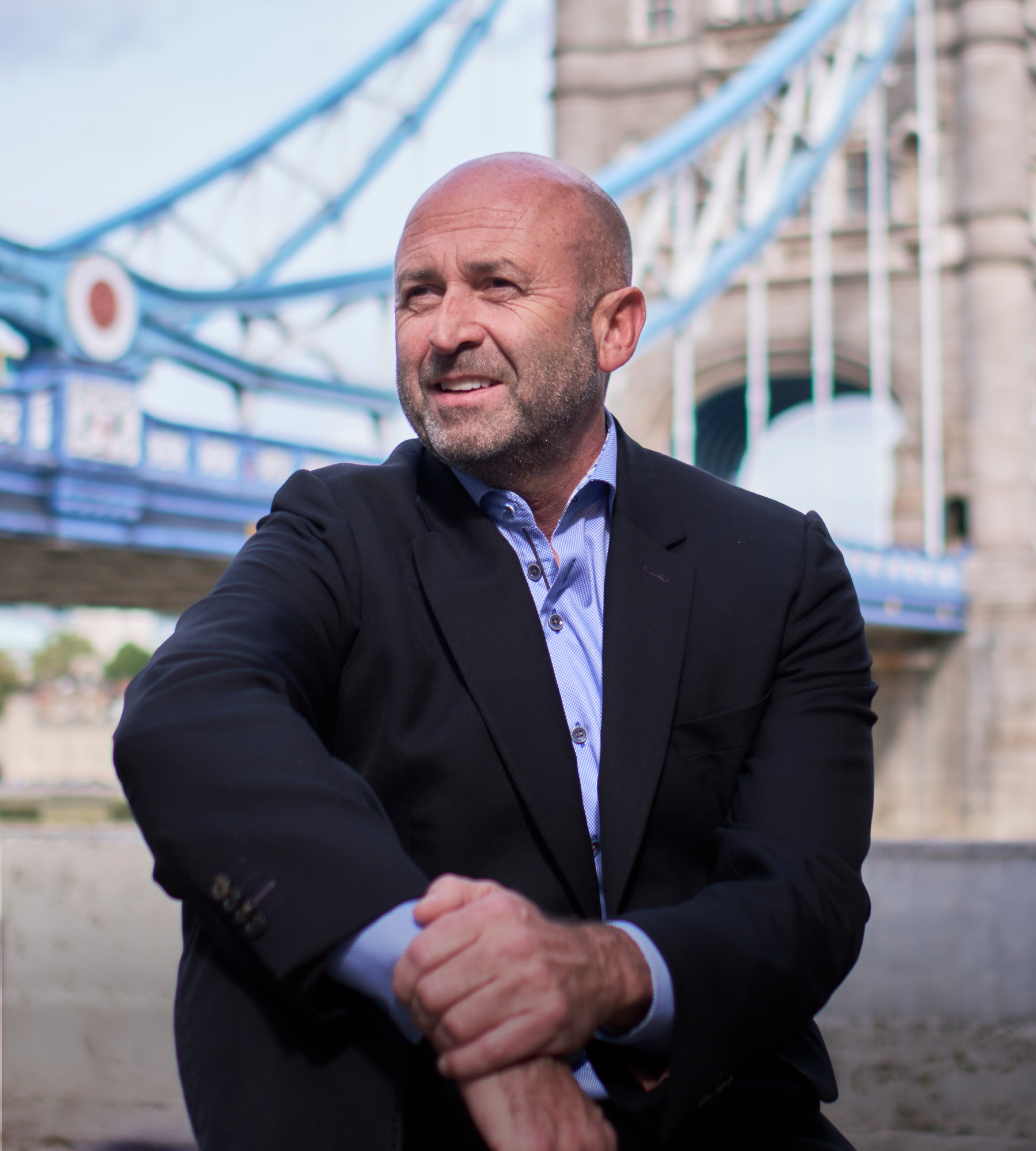
In the three years since Hammerforce CEO Andy Coster last spoke to The CEO Magazine, he has done more traveling than most.
Indeed, the Kiwi says he has spent more than half of that time overseas, despite the travel restrictions of the pandemic. Far from pursuing fun times, however, it was quite simply a case of make or break for his then-fledgling business.
With the company’s headquarters now located in London, the New Zealand-born firm has clearly made some big changes.
“We’ve just in the past year opened up in Dallas to help get presence in the United States,” he says. “So, yeah. We’ve been traveling.”
New Zealand was one of the first countries to slam its borders shut as the spread of COVID-19 started to get out of hand, meaning Coster faced a major dilemma – stay in New Zealand and hope for the best, or set himself up overseas and make things happen.
“We could sit back, wait and see what happened, and hope that politically things turned out alright and then we would just carry on,” he recalls. “My view was that we needed to take control of our future and our growth.”
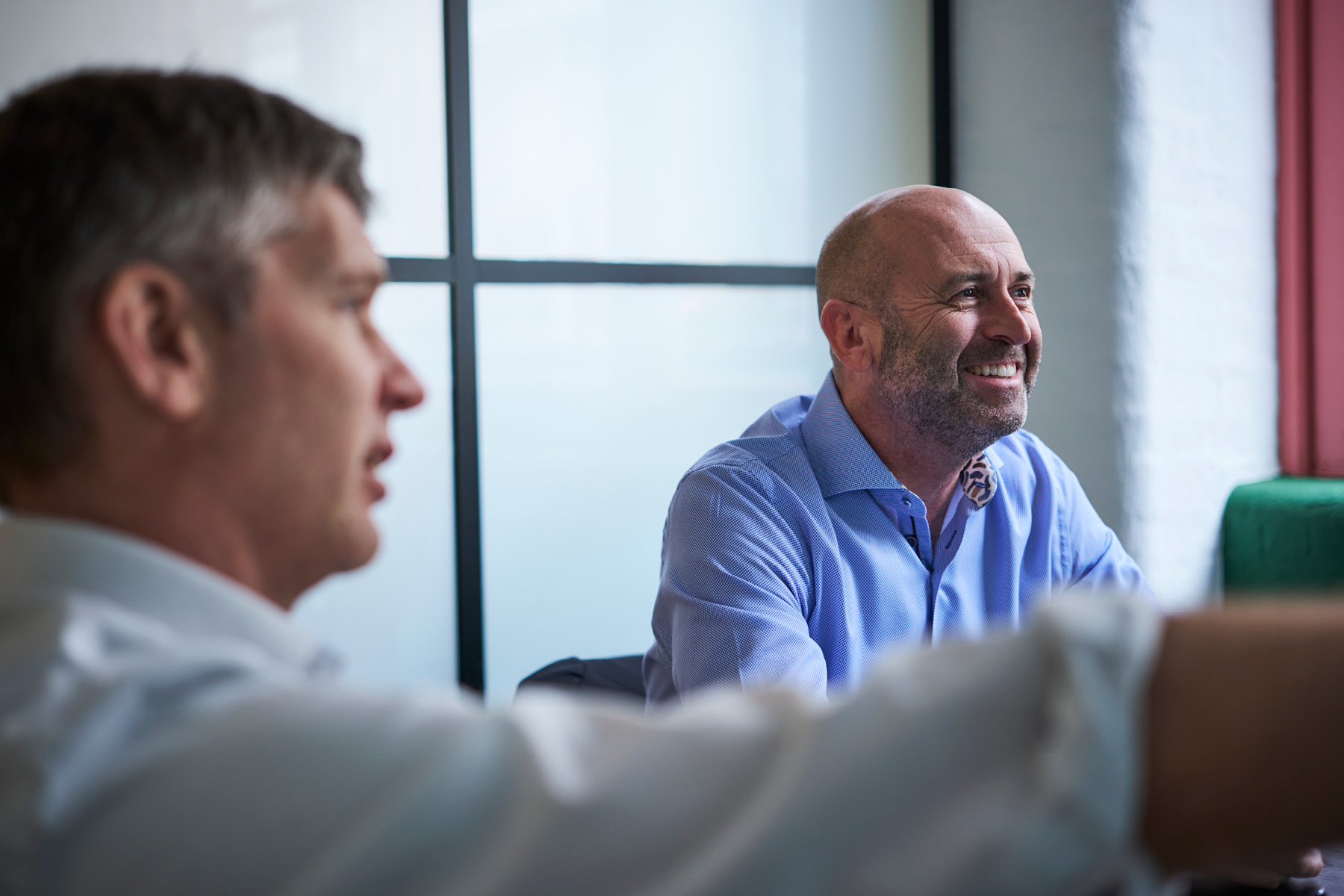
“My view was that we needed to take control of our future and our growth.”
That meant that Coster and a few key members of his team ‘parachuted’ themselves into London while Singapore Airlines was still flying and spent six months there, getting the word out.
“We’re an export company, and all our businesses, our customers and our potential partners are multinationals based in the United States, the United Kingdom and Europe. So you have to be around. You have to be in market, otherwise it won’t happen.”
At that point, interactions with companies were still possible. Even if meetings had to be done via Teams or Zoom, at least all participants were in the same time zone.
“You could actually meet with some people. And in our business, you have to be able to establish relationships,” he stresses.
The benefits of this leap of faith extended far beyond getting closer to clients. Coster’s time in the United Kingdom gave him a sneak peek at the issues that lay ahead.
“We got some foresight and insight into how the world was going to be developing,” he reflects. “If I had stayed in New Zealand, we wouldn’t have been able to see, for example, the issues around supply chain, culture, how people work – all the things that we take for granted now that have changed since the pandemic.
“We were able to get a head start and insight into that, and therefore adjust our business model and how we engaged. If I hadn’t gone and done that, I just don’t think we would have survived.”
During The CEO Magazine’s last conversation with the Hammerforce CEO, the company’s innovative portable compressed air nail gun was the hot topic.
While traditional pneumatic nail guns required long hoses to feed the compressed air from a separate compressor, Hammerforce’s model was instead powered by a compact, built-in compressed air reservoir.
This technology as an alternative power source for mechanical devices in place of combustion, pneumatics, hydraulics, batteries or electricity held vast potential for countless industrial applications, which Hammerforce has been exploring with a number of partners.
At that time, the company was still very much New Zealand-centric. But wind the clock forward to today and the New Zealand-based firm has managed to expand its reach around the world, with those aforementioned offices now established in London and Dallas.
“We’re definitely now a global business with a global focus and a global frontline,” Coster says.
Thanks to this broader presence, Hammerforce has inked several major deals with multinational corporates, most recently a multiyear deal with a United States-headquartered Fortune 500 company.
Although Coster can’t divulge the name due to intellectual property (IP) and confidentiality reasons, he says it is a household name.
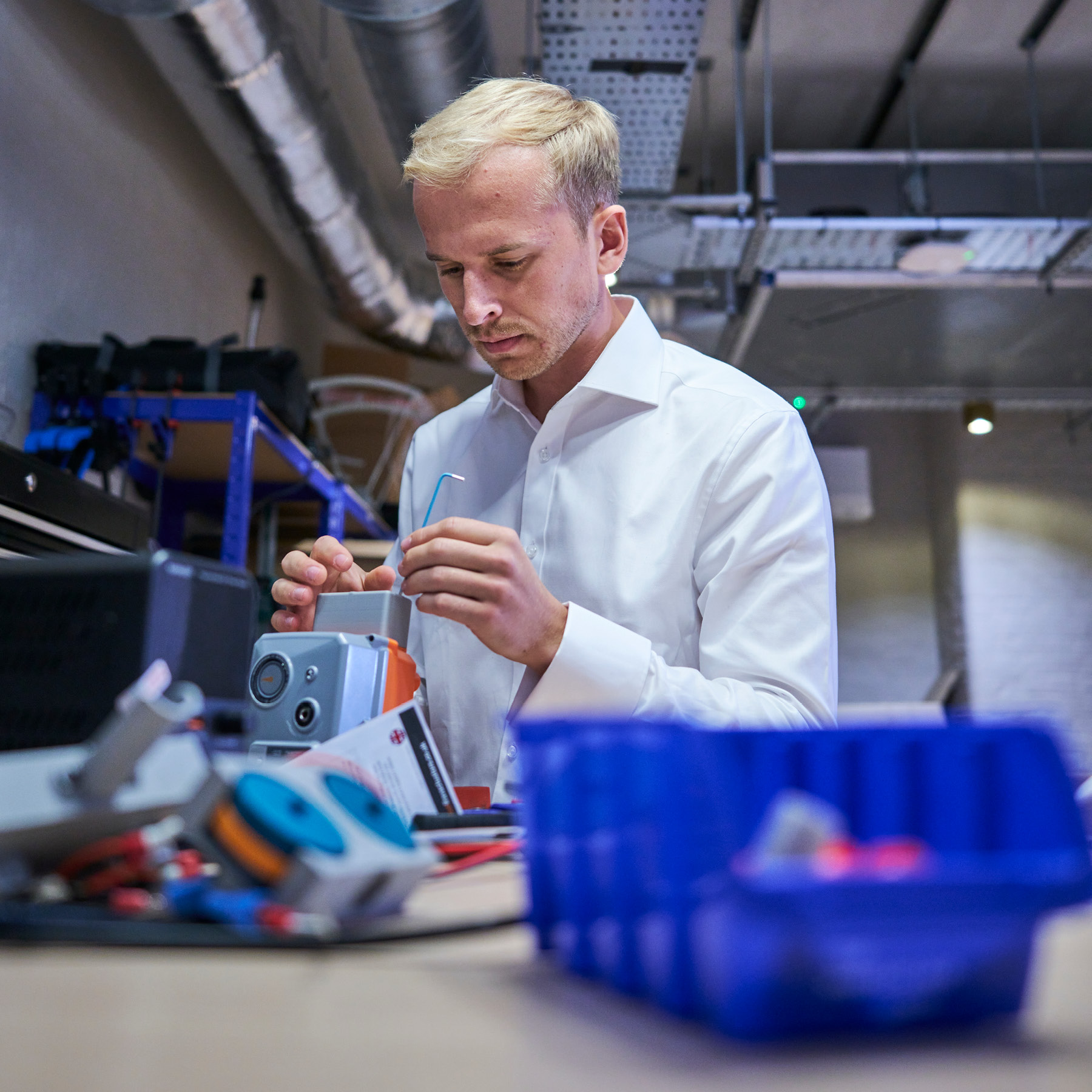
“This new partnership will see us work alongside one of the biggest household names in the United States to create new and innovative products using our technology.”
By combining its unique IP technology with its proven record of product success, the deal will see Hammerforce produce an innovative line of industry-leading consumer products that will become available within the next 18 months.
“This new partnership will see us work alongside one of the biggest household names in the United States to create new and innovative products using our technology,” he reveals.
Other significant partnership agreements include those with globally listed companies across a range of industries, including a global construction company and Financial Times Stock Exchange (FTSE) 100 industry leader.
“Hammerforce is passionate about making a transformative difference to our partners’ businesses,” Coster insists. “We share the entire journey with our partners, customizing our technology and accelerating commercialization.”
With many of these agreements signed for 15–20 years, Coster describes them as incredibly “validating”.
“The goals I articulated back in 2020, we’ve translated into reality in terms of getting deals done with these multinationals,” he says.
These are major achievements, especially having taken place against a backdrop of business uncertainty, at a time when borders were sealed shut and face-to-face meetings were crossed out of calendars worldwide.
The company’s focus has also shifted over the past three years from being based solely around ‘force’ technologies such as the Airbow, to include products that sit within ‘flow’.
“Force was using high-pressure compressed air with our valve and valve actuation technology to drive pistons or launches,” Coster explains, summarizing the technology as “clean, green and efficient”.
“Since then we’ve taken those principles underpinning our understanding and knowledge and know-how of the valve and valve actuation technology and applied it to process flow,” he says.
“So that’s a pipe in an industrial situation where there are fluids or gases running through it and you need a valve, for example, an isolation valve, to turn it on and off.”
It may sound like a simple concept, but the reality is far from it. “There’s lots of pipes in the world,” he points out.
“There’s lots of gases and liquids flowing through them that need to be turned on and off. So we’ve developed a whole new era of IP while we’ve been doing deals in the force area.”
The market is worth around US$70 billion each year, with half of that accounted for by automated solutions where an actuator is used to either pneumatically or electronically turn the valve on or off.
“With our technology and our valves, we can reduce the actuation force by up to 70 percent in some cases,” Coster explains.
“And because we can reduce the force required to turn something on and off, we can reduce the size and the footprint of the actuation, so we’re able to take out significant cost, and the size and footprint reduce massively.”
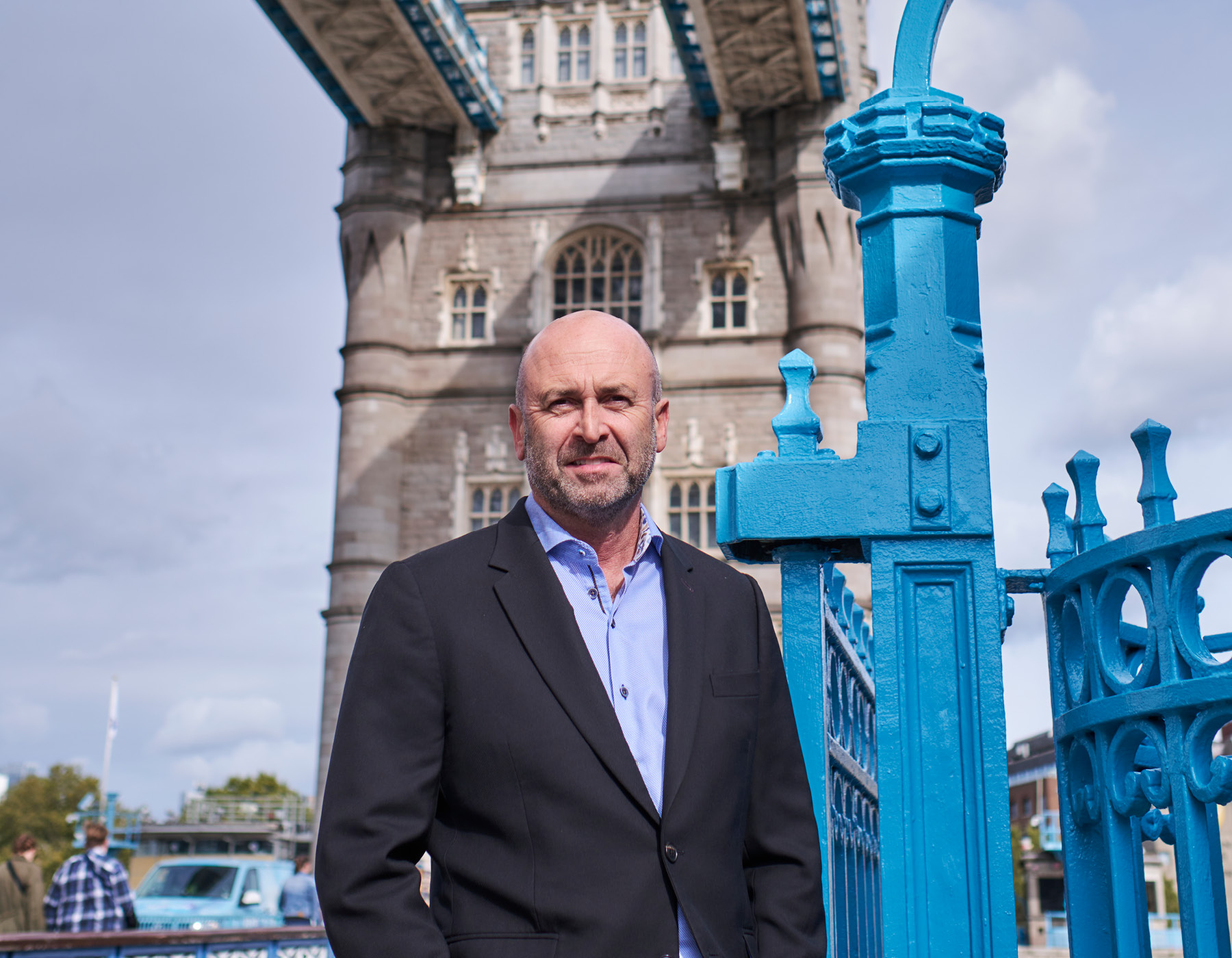
“Because our solution is cheaper, lighter, easier and more accurate, we’re able to have an offering that makes things safer and more reliable in that manual market.”
Manual valves are still used in a wide number of ‘very dangerous’ situations due to their lower cost, where human error comes into play, often with disastrous results, according to Coster.
“So because our solution is cheaper, lighter, easier and more accurate, we’re able to have an offering that makes things safer and more reliable in that manual market, which is the other 50 percent of the US$70 billion.”
The opportunities for Hammerforce’s flow technology are immense, with the benefits rippling out across the entire supply chain, all the way to the end customer.
It also fits neatly into the energy transition market, with a compelling hydrogen-focused proposition.
“We’ll be leading with hydrogen and also in energy security, liquefied natural gas, which is becoming more and more important,” Coster confirms.
Hammerforce will also be exploring applications across power, nuclear, water, pharma, food and beverage. This side of the business will be structured very differently to its force operations, he explains.
“With force, you could cut up your patent and have an exclusive arrangement with various companies using the same underpinning IP, but in different fields of focus,” he expands.
“Whereas this is going to be one big deal, because it’s hard to break up the market, and you’ve got pressures and temperatures of these valves that could be used across different industries.
“One of the troubles we have is that because our technology is revolutionary, involves lots of innovation and it takes a few years for the business that we’re dealing with to be able to commercialize it, they don’t want people to know. So we’re very discreet.”
It may be diversifying its portfolio into flow, but that doesn’t mean that Hammerforce is taking its foot off the force pedal. There are still so many potential applications to explore on this side of the business and Coster’s excitement about the possibilities is clear.
“We’re looking at drone launches. We’re looking at door-breaching rams, low-voltage circuit breakers, needleless injections,” he shares. “We’ve got all these opportunities, but we’ve just got to deliver them in a way in which we’re not going to drop the ball, and so far we haven’t.”
There are no plans to split the two different areas apart, he insists, because they are built on the same principles. “If we wanted to, we could split force out, because it sort of lends itself to that, but there’s no need to at the moment.”
More important is ensuring Hammerforce masters the often challenging task of growing and managing people across different locations and cultures.
“It’s educating them to be able to deliver our business model, not another business model, without dropping the ball,” he says. “I make sure that everyone is involved in different sorts of projects, which enables them to learn across different disciplines and industries and issues.”
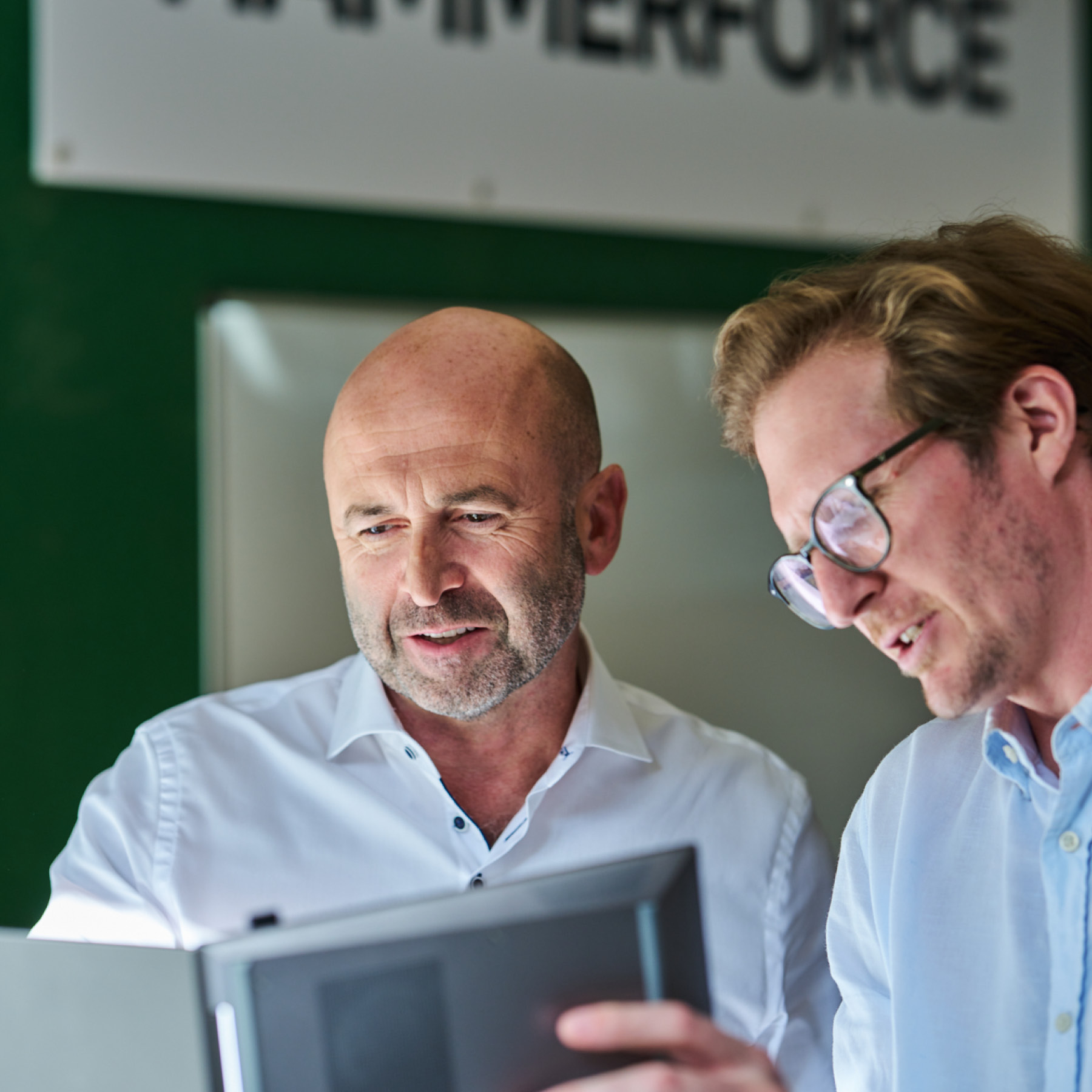
“It’s not about sitting in a room coming up with ideas like a mad professor.”
Three years ago, Hammerforce had just a handful of patents. Now it’s up to 15, all in various stages of application, which have been generated by a dynamic team working collaboratively with clients.
“By solving problems, they’re creating new IP,” Coster says. “It’s not about sitting in a room coming up with ideas like a mad professor.
“The way it works is that I’ve got my team and the partners we’re working with, and through collaboration we solve those problems together and we find, out of that, new IP.
“They get exclusive rights in their field of focus and then we can use it in other fields of focus. That’s a smart way to leverage your partners. They benefit. We benefit.”
This way of working means that Hammerforce can efficiently and effectively generate new IP very quickly for a company of its size, collapsing the timeline from idea to doing a deal.
“Our first one took about 18 months to do from conception to signing a deal,” he recalls. “But I’ve just done one now where we had an idea nine months ago that just signed a deal this week. So we’re getting our cycle time from idea to deal down.”
Hammerforce has achieved this through a process of learning and adjusting, according to Coster.
“It’s all about leverage, because when you’re little and you’re trying to grow quickly, you’ve got to be smart and you’ve got to find ways to leverage,” he advises.
He has therefore brought in industry experts from around the world to help the company work through any industry issues.
“We have ways to find those people who have maybe left the industry but they know a hell of a lot about it. So we get down the learning curve very quickly,” he says.
“They are also able to be a conduit in introducing us to relevant people and then working with us to help put together pitches and carry on working with people.”
All of these indicators point to the fact that Hammerforce is not your typical IP licensing company – a fact that has enabled it to win these mounting deals with major corporates, delivering on the promises it made its shareholders in the process.
“Our model is very much around, first of all, making sure that we are engaging at the C-suite level, understanding the economics, the industry dynamics and drivers that these companies are operating in, understanding how they need to make money, and going to them with us demonstrating to them, not saying, ‘Here’s our IP. Away you go’,” he says.
“Actually, we put ourselves in your shoes. We understand your issues. We understand what you’re promising the stock markets. We know that you need to find new forms of innovation. So we’ve looked at your strategy, and we’ve problem-solved to a certain extent, because obviously we don’t know everything.”

“We’re very much customized, but it’s integrating commercial thinking, economics, pragmatic implementation of solutions with our IP and knowledge and know-how, and working in a collaborative way with people.”
Hammerforce then presents its IP in a tangible form that captures the attention of CEOs. “It’s aligned with their economic value drivers or what they need to deliver to create value,” he adds.
These are customized solutions rather than products, with underpinning generic technology.
“We’re not selling lemonade to everyone. We’re very much customized, but it’s integrating commercial thinking, economics, pragmatic implementation of solutions with our IP and knowledge and know-how, and working in a collaborative way with people,” he explains.
It’s proving so effective that Coster confirms one of Hammerforce’s partners is on target to invest US$45 million in its IP, including commercialization to bring it to market.
Coster has quite the knack for painting a picture, and he uses a couple of charming metaphors when discussing the long-term nature of Hammerforce’s partnerships, which are so critical to its business and require the utmost levels of collaboration in order to deliver products that are at the top of their game.
“We’re not a one-night stand,” he says with a smile. “We start dating, things go well, we work each other out and then we get married.”
It’s not just about a piece of paper with a couple of signatures on it – it’s all about relationships and trust, he explains. “We spend just as much time evaluating a potential partner as they do us. We don’t just take whoever we can.”
That’s for a number of reasons. First, the technology that they are implementing has 20-year annuities so Hammerforce’s partners must invest and get the product to market.
“Otherwise the economics don’t work for us,” Coster explains. “We’ve got to make sure that they’re a company that has a culture of openness to people from the outside and to be trusting.”
He calls it the Paddington Bear Model, referring to the beloved Peruvian bear with a penchant for marmalade sandwiches.
“Instead of an IP company turning up to middle management with, ‘Here’s a patent. Good luck, away you go and we’ll give you some advice,’ I turn up with my little Paddington Bear case, and I open it up,” he says.
“I’ve got the economics, what problems we think they’re trying to solve. We might have prototypes. We might have computer-aided design drawings.
“We’ve demonstrated and taken some risk to show them the tangible value that we can deliver. And that’s how the relationship starts – it’s the first date. So it goes pretty well, they want to see you again, which is quite useful, and away we go.”
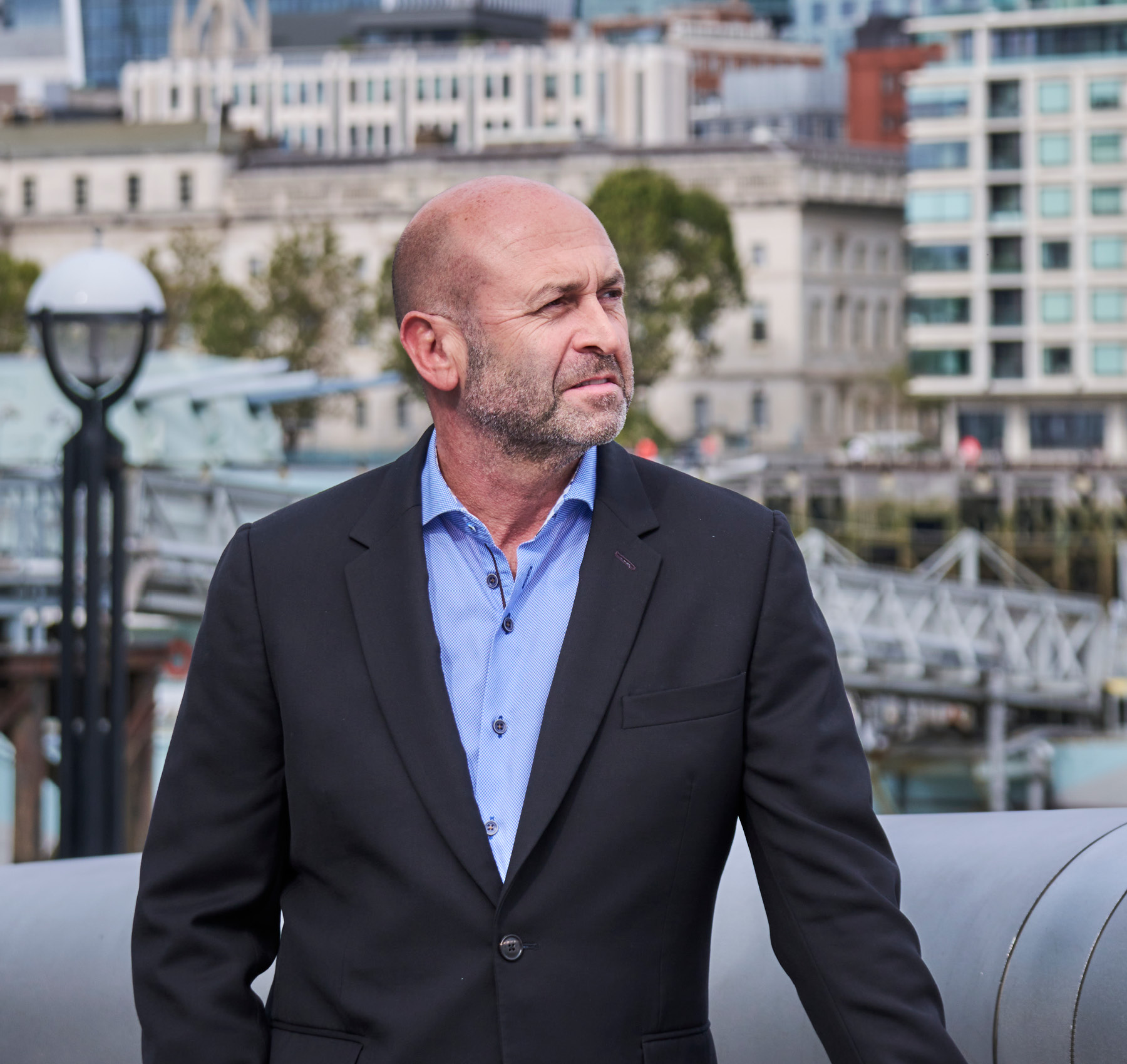
“We’re not a one-night stand. We start dating, things go well, we work each other out and then we get married.”
Coster believes the reason this approach works so well is because many of the large corporates spend their time and the energy of their vast workforces on incremental projects rather than big innovation projects.
“That’s because it’s risky for these big companies because they have quarterly earning reports to the markets,” he explains. “However, they also need an innovation story to tell the markets.”
This is where Hammerforce comes in. While it can typically take around eight years for a huge company to bring something to market due to their incremental approach, Hammerforce can knock this timeframe right down.
“We can take two, three, sometimes four years out of that process by accelerating and essentially being an R&D company that comes to them and works through their processes of product development and innovation,” he explains.
“As a result, we’ve reduced time, and therefore we’ve reduced risk, so they feel confident and they’ve got an opportunity to allocate time and resource to something, because it’s much further down their innovation-product-to-market curve.
“Then we collaborate with them and we work alongside them to make sure that we don’t leave them high and dry. We end up having a lovely marriage, and we have a few children and things, and we make sure the kids get off to school.”
Although technical terms such as IP, technology, licensing and so on may sound dull, the reality is quite different. Through this process of close collaboration, friendships have formed and intense creativity has been unleashed.
“What I’ve tried to do is bring a little bit of emotion, engagement and connection and make sure that I’m developing relationships and ultimately friendships with these executives, and so far, so good,” he says with a smile. “It’s bringing a human component to the business model, which sets us apart.”
For Coster, it’s the second time he has built up a successful company, having come out of retirement in 2016 to put his talent and efforts behind Hammerforce as its CEO. So is it a different experience the second time around?
“When I did my first company with a few other partners, we were younger, a bit more organic and with less formality,” he reflects. “We ended up doing a deal with a FTSE 100 company.”
This time, however, he has taken a different tack, putting in a solid board around him to help drive Hammerforce forward with their combined expertise in a range of areas.
“If you put them all together, in New Zealand terms it’d be one of the best boards you could get, whether it be a public or private company,” he says proudly.
Big names include former New Zealand Minister for Finance Steven Joyce, London-based private equity consultant James Drummond, Mark Binns, formerly of Meridian Energy and Fletcher Building, and former Air New Zealand CEO Rob Fyfe.
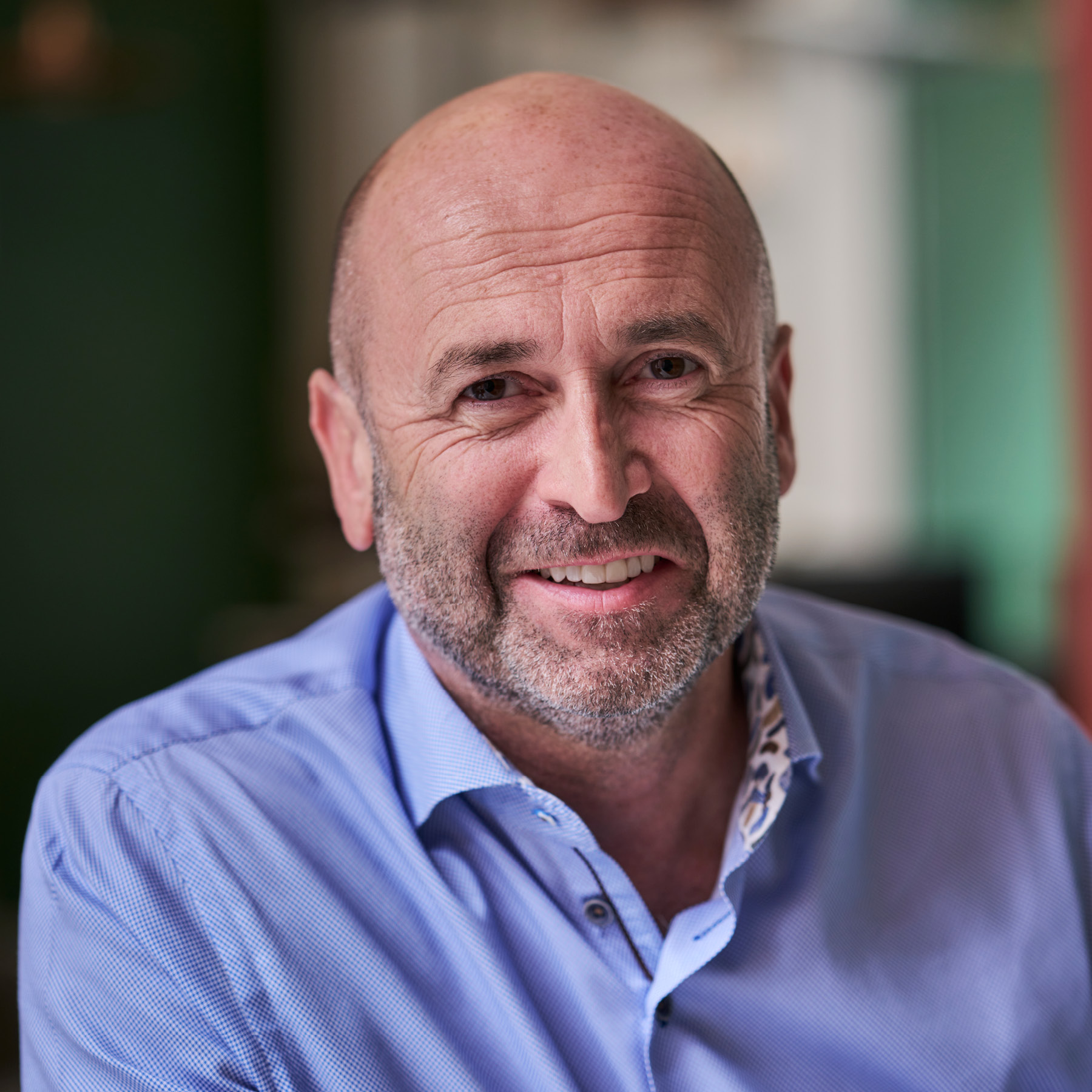
“As our IP grows and develops, it opens up more and more opportunities.”
“Putting a board around me has been important because when you look at New Zealand, and maybe Australia, but certainly New Zealand, only a very small fraction of companies that try to expand overseas succeed and survive long-term,” Coster adds.
“So if that’s one of the biggest problems, and we’re a company about expanding overseas, then I need to get some people around me who understand those issues, who have been international and can mentor me, give me advice and support me to make sure that I manage that growth and don’t become one of those companies that don’t make it overseas.”
Strong governance processes are also essential – an area where the board also offers much guidance.
With so much progress made in such a short time, it would appear that Coster has all of Hammerforce’s bases well and truly covered. He sums its evolution up beautifully with another of his metaphors.
“The IP that we’ve grown, it’s a bit like a tree. We started with a little seed and now you have branches and leaves,” he says.
“As our IP grows and develops, it opens up more and more opportunities. And right now I just can’t see an end to it. It’s unlimited. So the future’s looking pretty good so far.”